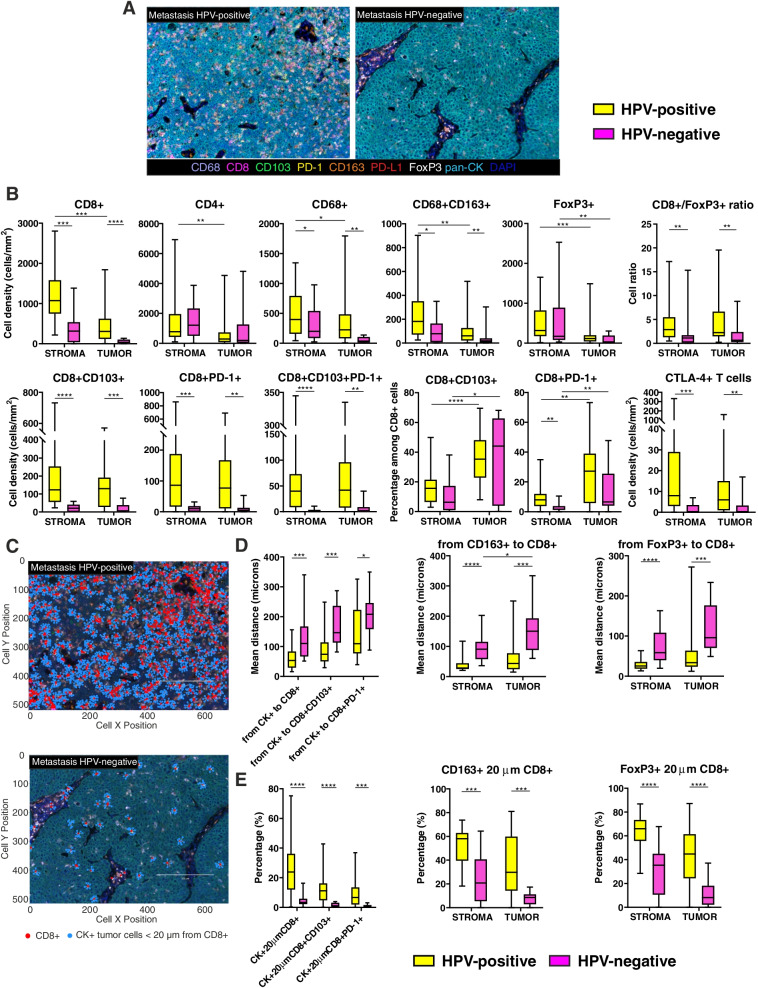Fig. 5.
Characterization of immune cells infiltrating HPV-positive and HPV-negative metastases. A Representative 9-color multispectral images of HPV-positive and HPV-negative metastases. Immune markers and color code are indicated in the underlying legend. Original magnification X20. B Immune cell populations infiltrating the stromal and the intra-tumoral regions of HPV-positive and HPV-negative metastases. C Representative images of cell-to-cell distance analysis in HPV-positive and HPV-negative metastases. Cancer cells (light blue dots) within a 20 μm radius from CD8+ cells (red dots) are represented. D Nearest neighbors analysis measuring the mean distance between each tumor cell and the nearest CD8+, CD8 + CD103+ and CD8 + PD-1+ T lymphocytes (left), and between each CD163+ M2-polarized macrophage (middle) or each FoxP3+ Treg cell (right) and the nearest CD8+ T lymphocytes in the stromal and intra-tumoral areas. E Count within analysis calculating the percentage of tumor cells within a radius of 20 μm from CD8+, CD8 + CD103+ and CD8 + PD-1+ T (left), and the percentage of CD163+ M2-polarized macrophages (middle) or FoxP3+ Treg cells (right) within a radius of 20 μm from CD8+ T lymphocytes in the stromal and intra-tumoral areas. Significantly different data are represented by *p < 0.05, **p < 0.01, ***p < 0.001 and ****p < 0.0001

